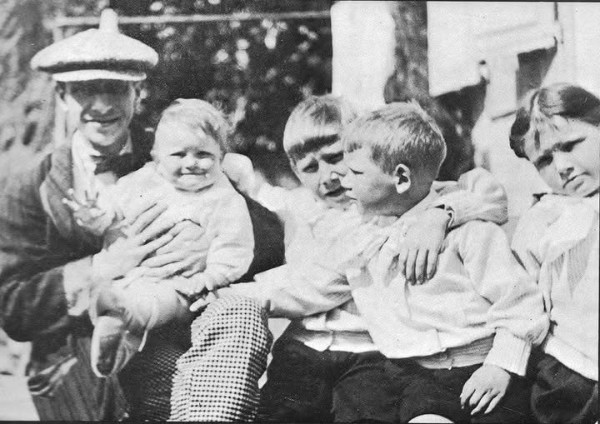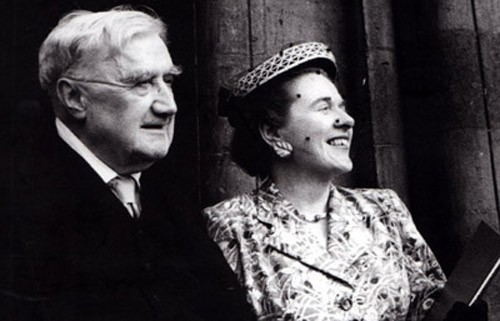You might think showing up to a concert on time with your instrument, the music, and wearing black garb seems like it would be enough. But it isn’t. Unexpected issues can occur, and you’d be wise to be prepared for the unpredictable. After a lifetime of performing, I’d like to suggest that you carry a survival kit containing the following essential items in your toolbox.
Knowing musicians, I am sure the quips are already flying.
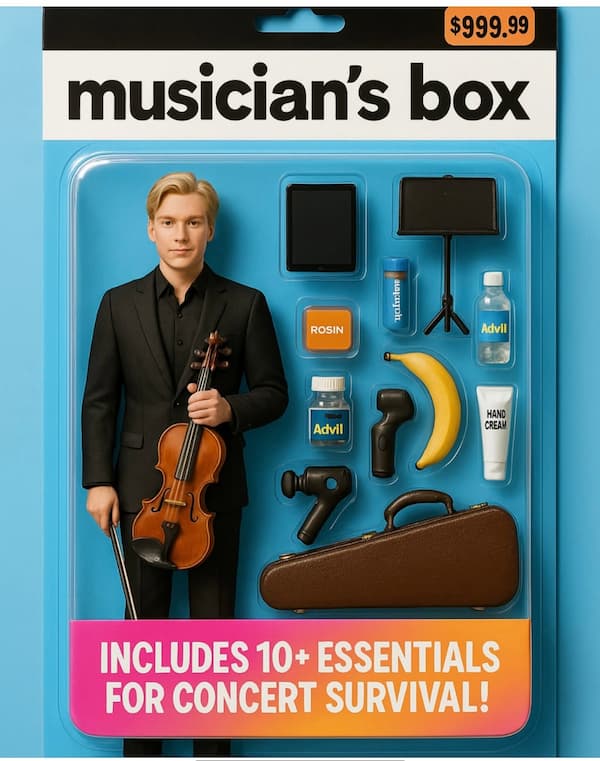
Musician’s tool box © spcomusicians/Instagram
Here are a few:
Violinist: Don’t forget the Inderal (or other beta blocker) and pasta.
Oboist: Carry 14 tuning forks tuned to A440, and 7 knives to tweak your reed during a 2-bar rest.
Clarinettist: Pack a mirror so you can make sure your embouchure looks like you are smiling at the audience.
Trombonist: Bring an oversized sandwich and a can of beer.
French Horn: Since we don’t have spit valves…bring a cup of wine. Down it immediately so you can use it to collect the moisture after you drink!
English Horn player: A stack of notepaper saying, “the playoff score is now 40 to 22!”
Cellist: Carry a roll of duct tape, belt, or long scarf for the endpin in case your rock stop slides on the floor, and don’t forget the chocolate enough to share.
Kidding aside, there’s no need to invest $999. 99. Here is my list:
A Musician’s 10 Essential Survival Items
1. This may be self-evident, but string players should have handy extra strings, rosin, a mute, a pencil, nail clippers, and even a practice mute for tours when you must practice or warm up in a hotel room. And this could happen:
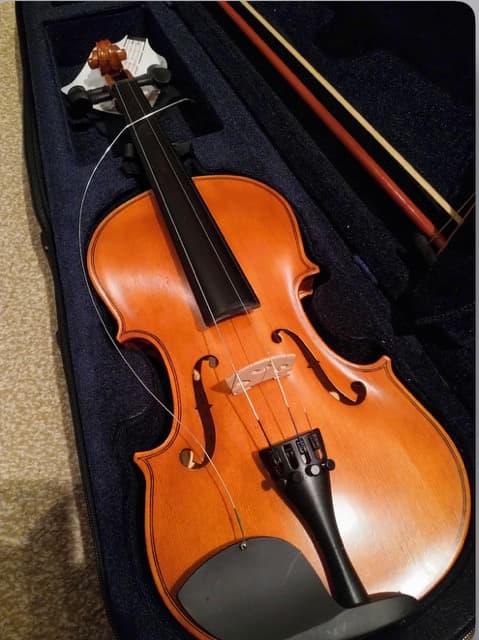
Broken string
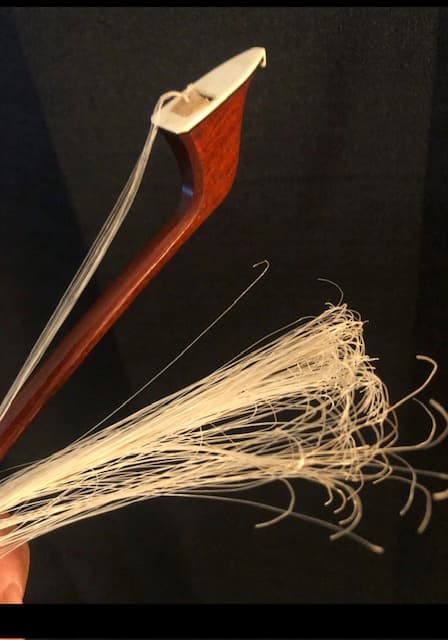
A bow disaster
So, an extra bow in your case is important.
Wind and brass players should bring along valve oil, and supports, harnesses, and straps to help hold or support your instrument for long rehearsals. Drummers should bring along extra sticks. WD40 could also be helpful to have in your locker.
2. For long trips on tour bring good quality headphones and your favorite music. I’m always happy to listen to Prokofiev Overture on Hebrew Themes, or Brahms chamber music.
Sergei Prokofiev: Overture on Hebrew Themes, Op. 34b (French National Radio Orchestra; Jean Martinon, cond.)
Or perhaps you should listen to some upcoming tricky repertoire or something new to you, such as this?
Carl Nielsen: Symphony No. 1 in G Minor, Op. 7, FS 16 (Royal Danish Orchestra; Thomas Søndergård, cond.)
3. Maintaining your posture is important for playing with ease and pain-free, but some halls have hopelessly dismal chairs. Carry an Ergo Cush or other wedge-shaped cushion to sit on or wood blocks to raise and /or angle performance chairs. The ideal sitting position is so that your thighs descend from your hips, and your body weight is forward and on your feet.
4. Other seats can be hazardous to one’s posture while you commute. Carry a small firm pillow or lumbar cushion for your back. Use these while traveling on tour and while sitting in bucket seats in a car, on airplanes, or in buses. Alternatively, on an airplane, ask for a blanket to roll up for your back or purchase an inflatable pillow—one for your back and one for your neck.
5. Earplugs are essential to keep with you for the times you might be seated in front of the trumpets or piccolo, when you are rehearsing a loud, cacophonous work with a barrage of percussion (think the Mahler hammer blow in Symphony No. 6) .
Gustav Mahler: Symphony No. 6
or when you are rehearsing in a small reverberant room. Your hearing might be threatened. If you are on tour, you may be asked to exit an airplane via the tarmac unexpectedly. Have hearing protection at the ready.
6. Outdoor concerts require some other survival items. Bring a loose-fitting jacket or sweater in case the temperature is chilly. When I performed a solo in a drafty church, I used hand warmers that I kept in my pocket. Bringing mittens with the fingertips cut off can help too. For hot locations outdoors bring sunglasses, insect repellant, water in spray bottle, a thermos with cold water, and don’t forget a cloth to shield your instrument from the sun, and a rain poncho.
7. For cellists and double bass players, I wasn’t kidding about the duct tape. I recall playing The Messiah year after year in our Saint Paul Cathedral where we were sitting on marble floors. Argh! No type of rock stop/puck anchored our endpins, and floorboards/straps scooted side to side! Our stage manager had duct tape at the ready, it was a lifesaver (and concert saver.) It can be handy to put under chair legs when they slide as well.
8. Backstage survival tools are important. When knots pop up in your back self-massage tools can help! Keep a travel sized theracane, a tennis ball, or a two-inch super ball with you. One can roll on these balls to knead spots that are tight. A foam roller is also great if you have the space to lie on it. Place the theracane along your spine, supporting your head and neck. Extend your arms to stretch your pectoral muscles. When a foam roller isn’t handy, you can gently lean into a corner with your hands placed on the wall in the position of ten o’clock and two o’clock; then nine o’clock and three o’clock.
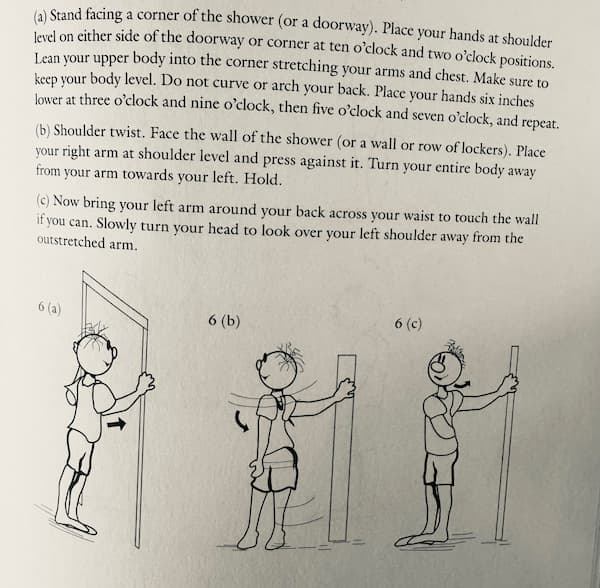
Pectoral lean
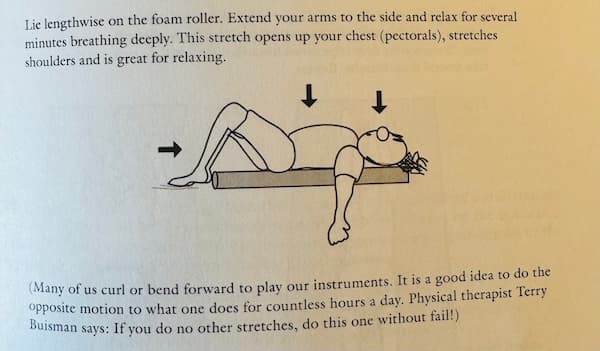
Foam roller stretch
9. Have ice packs handy for sore muscles after a demanding concert.
10. And finally, bring along emergency medicines, and healthy snacks and drinks. My audition here in Minneapolis was unforgettable. The process went into the wee hours of the evening as the committee narrowed the field down to finalists. I was starving. Why didn’t I bring a banana or apple, some granola bars, nuts, string cheese, or peanut butter with me?
What have you got in your Musician’s Essential Toolbox and Survival Kit? Have I forgotten anything? Let us know.
For more of the best in classical music, sign up for our E-Newsletter

